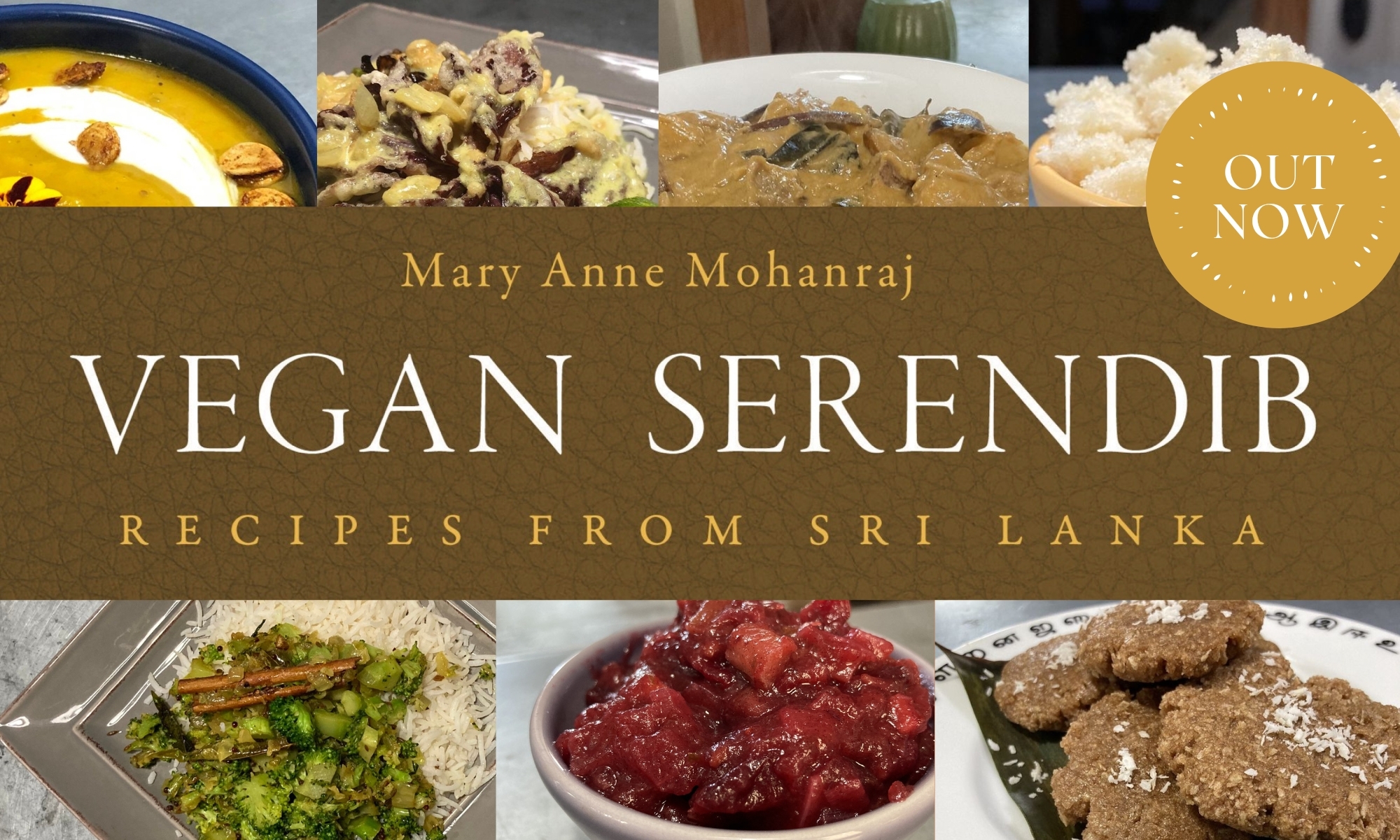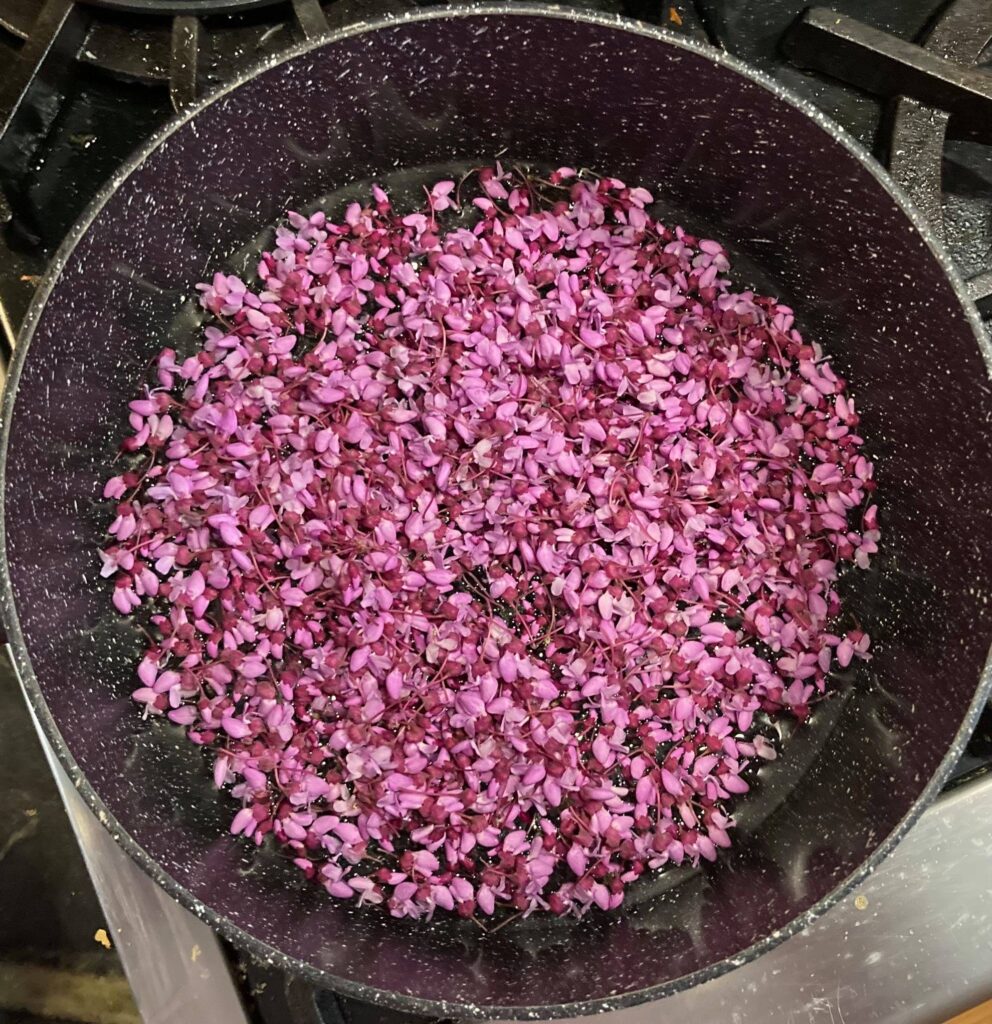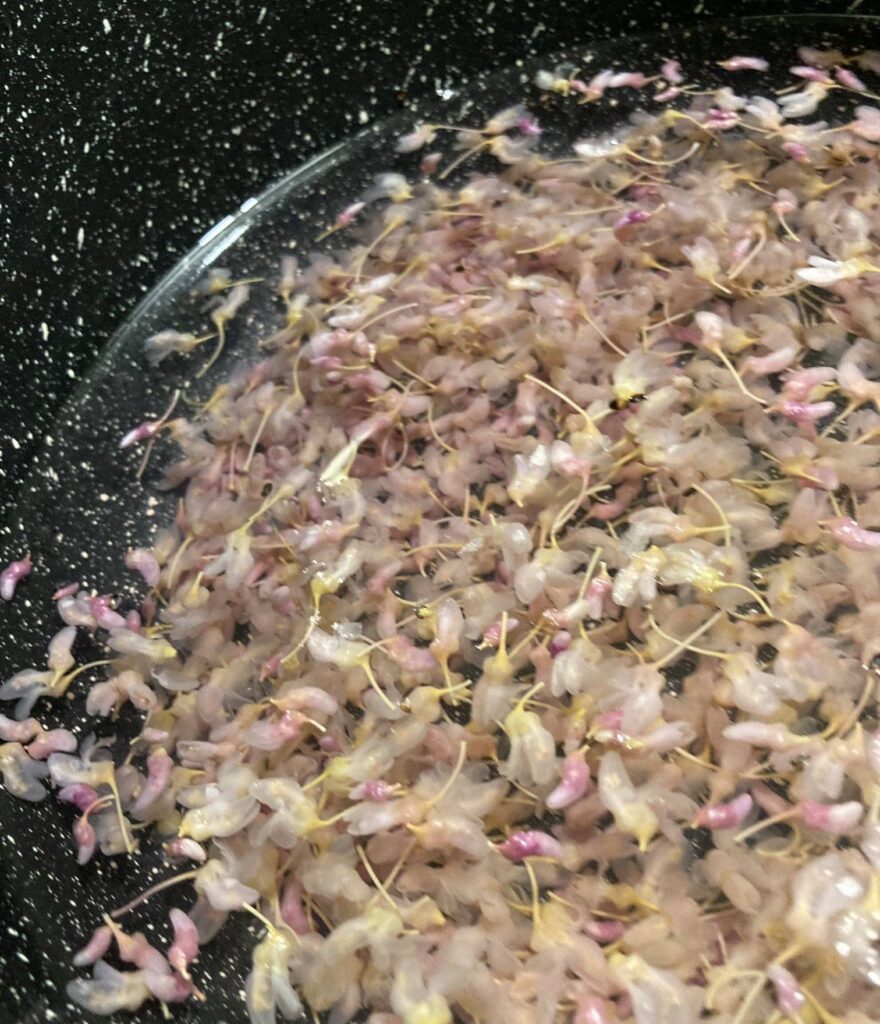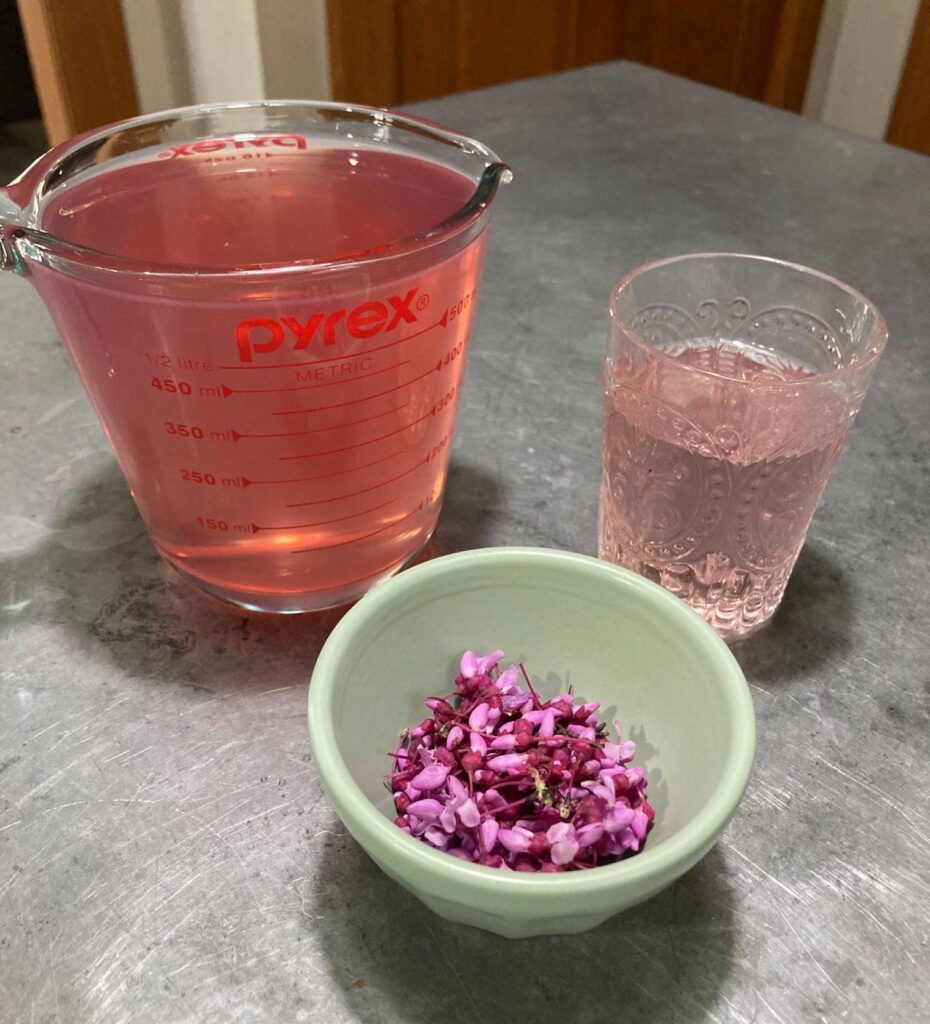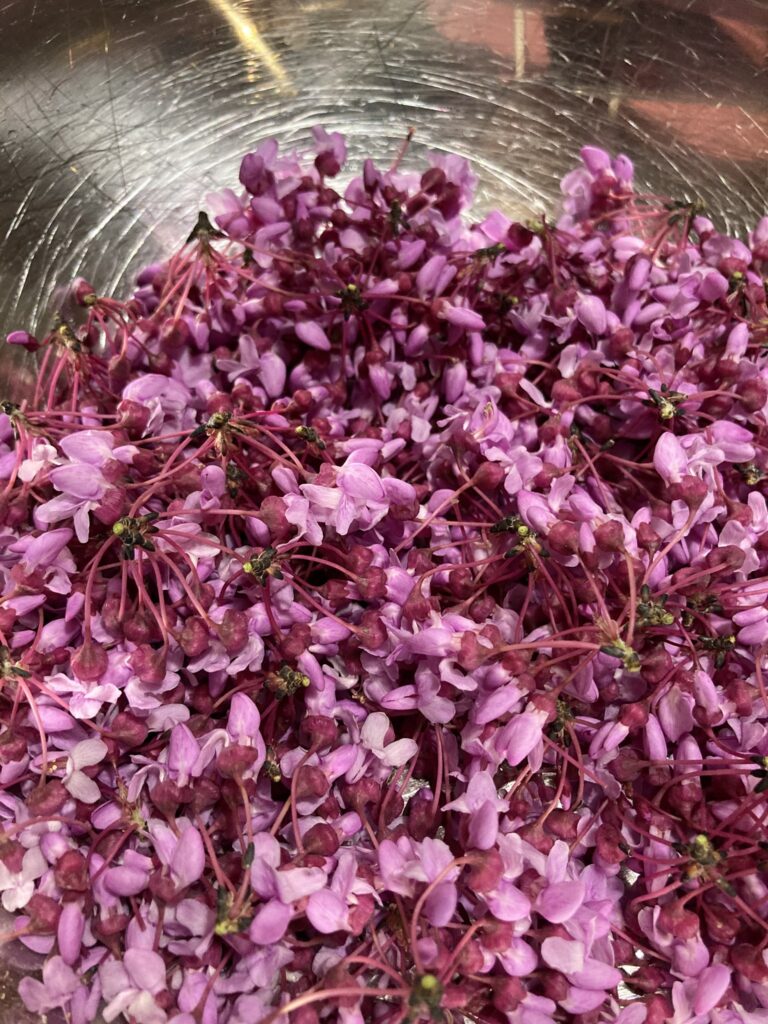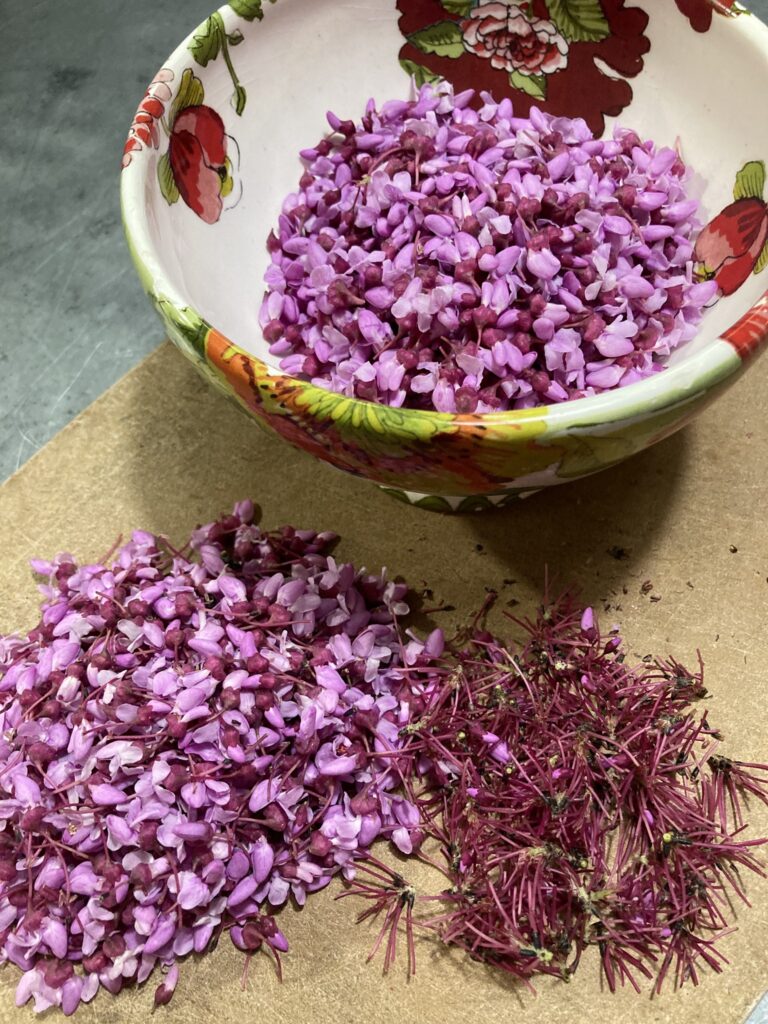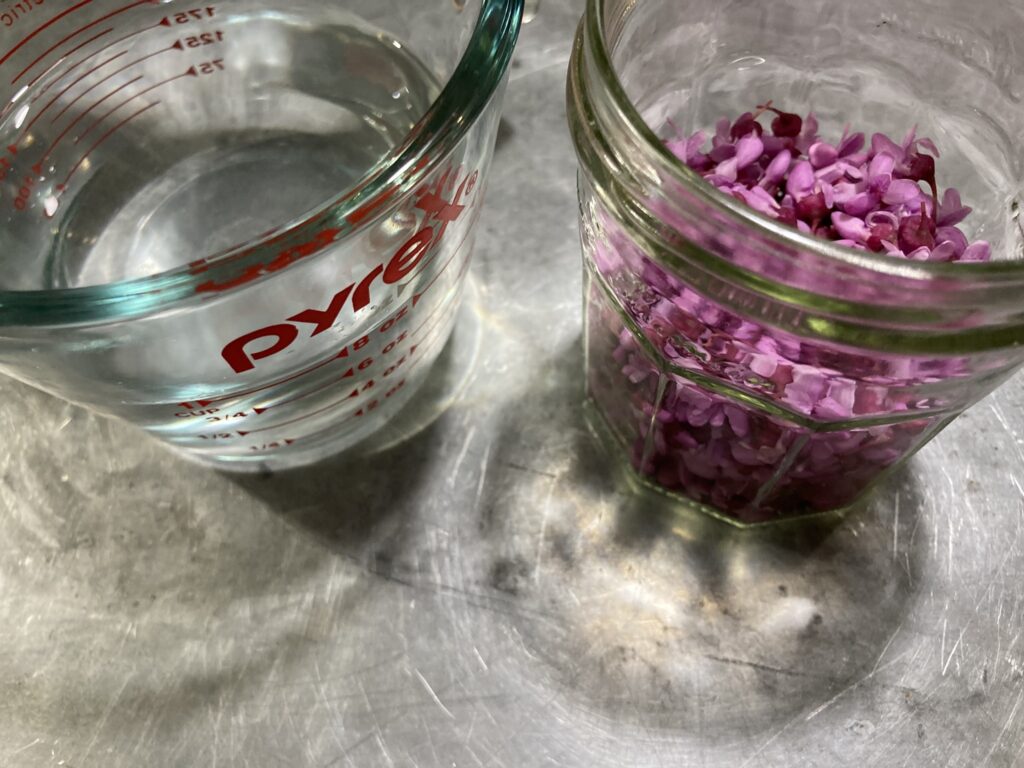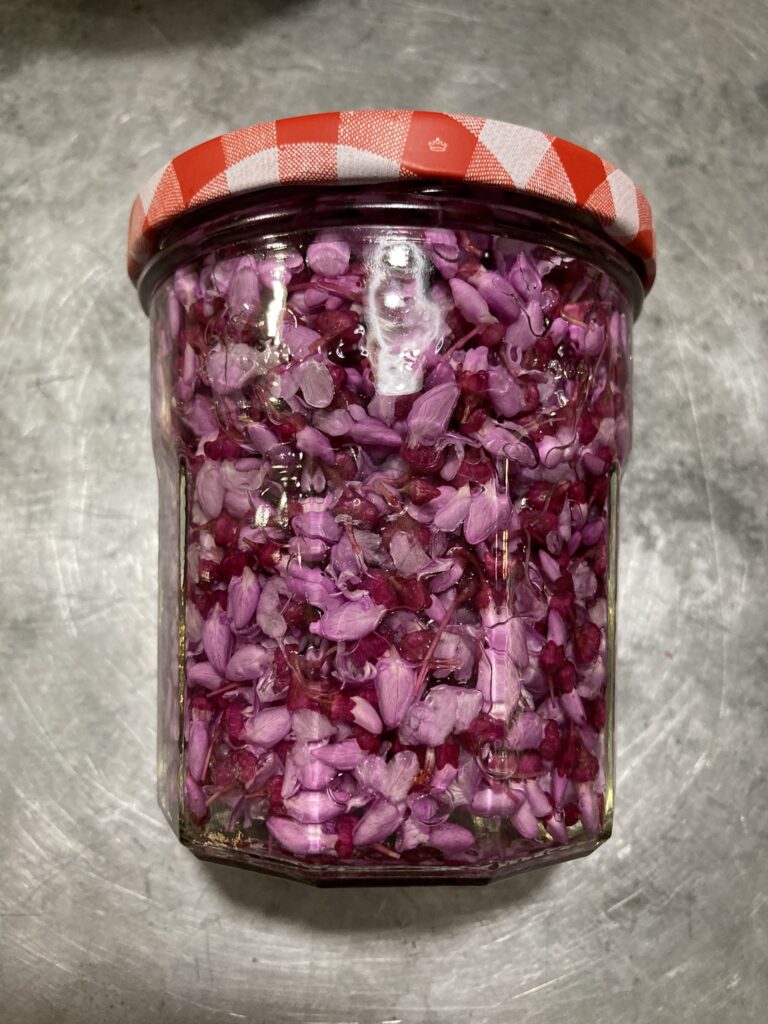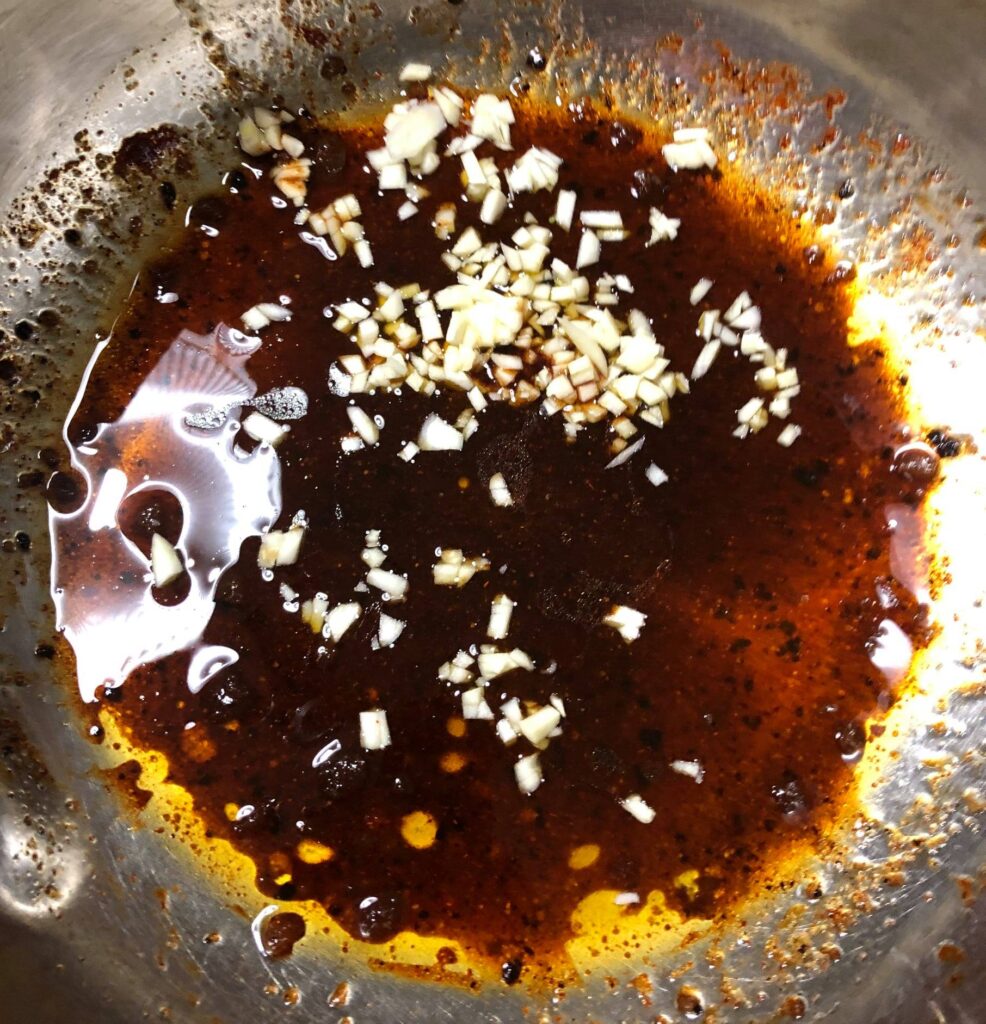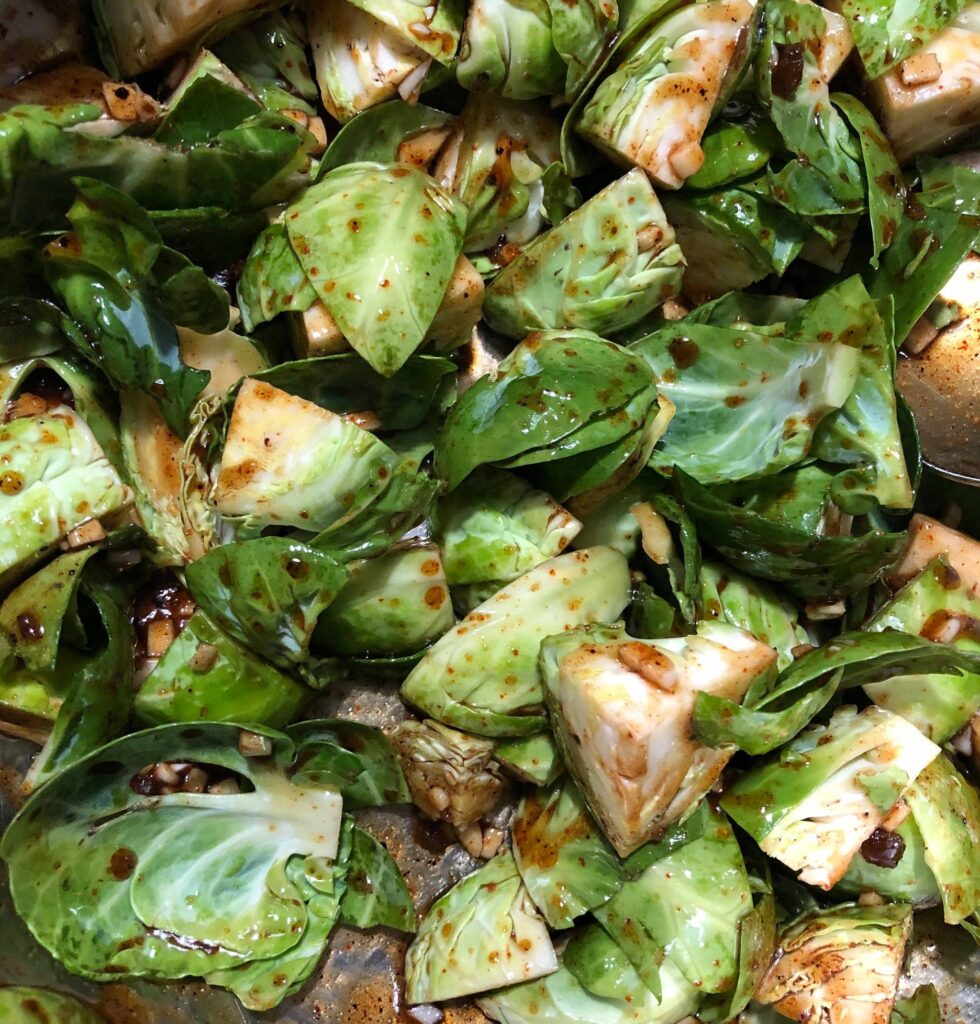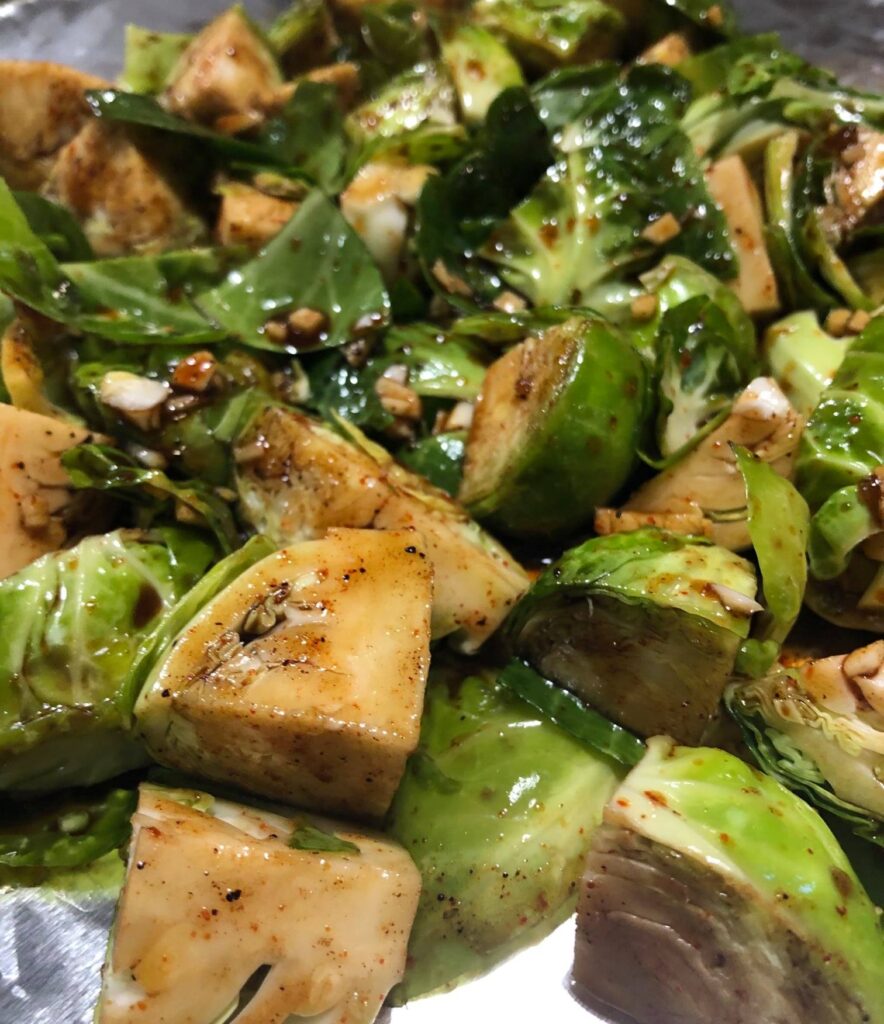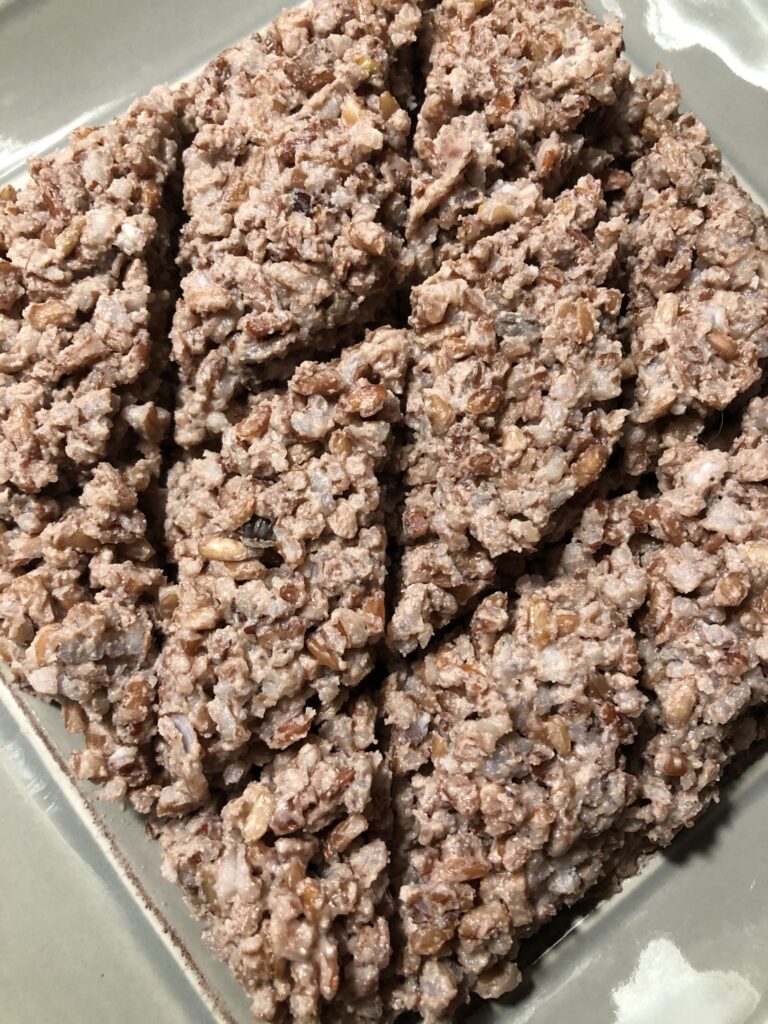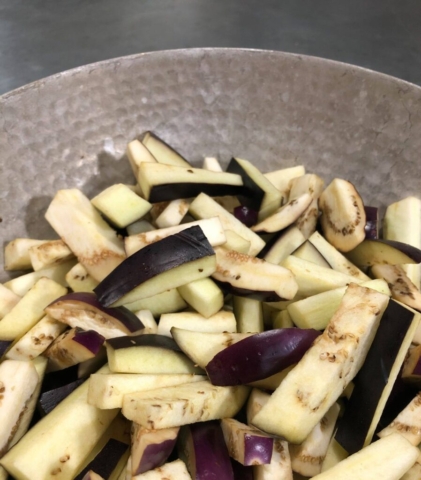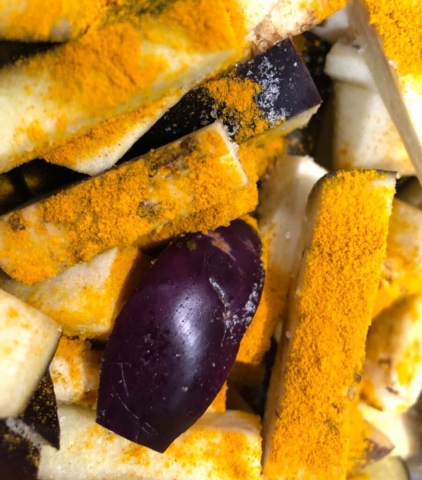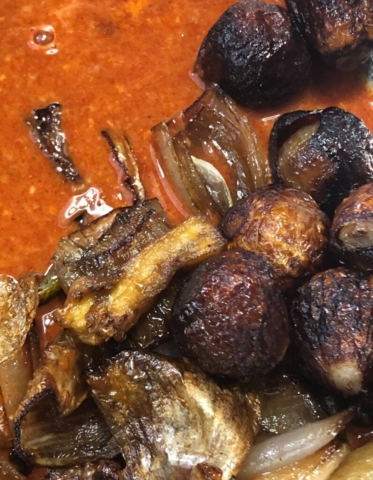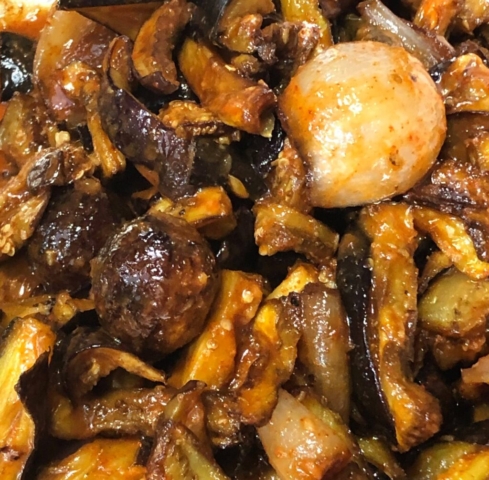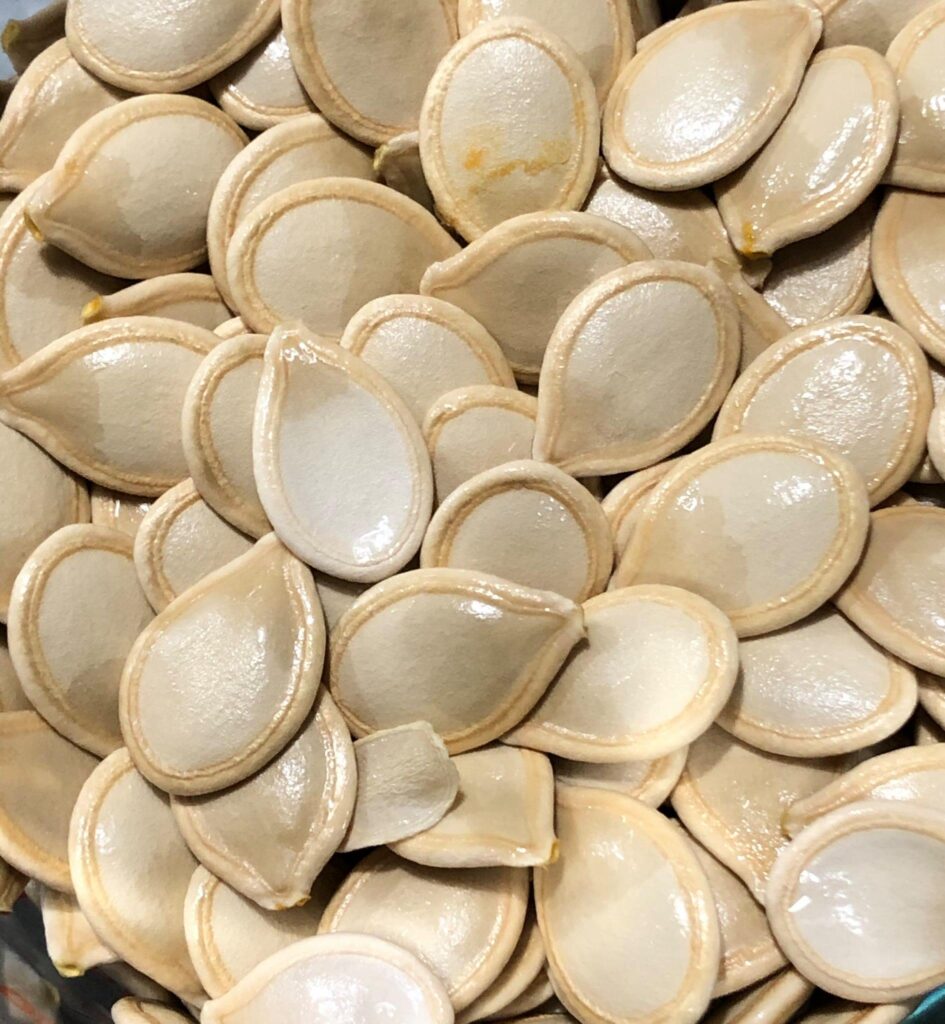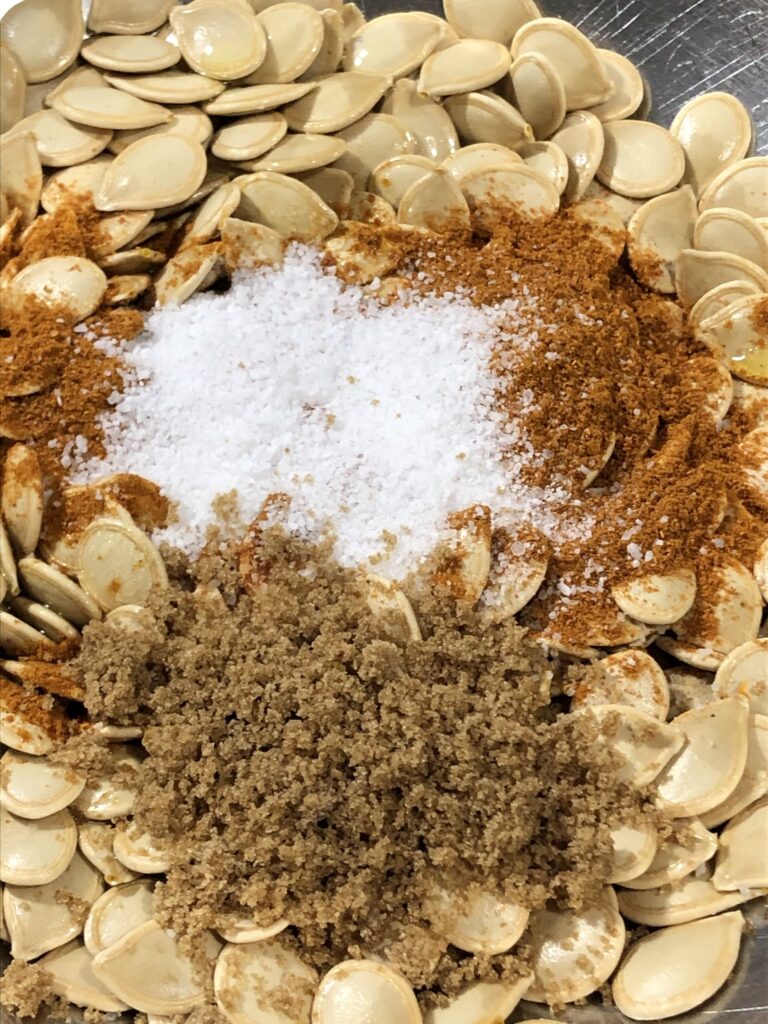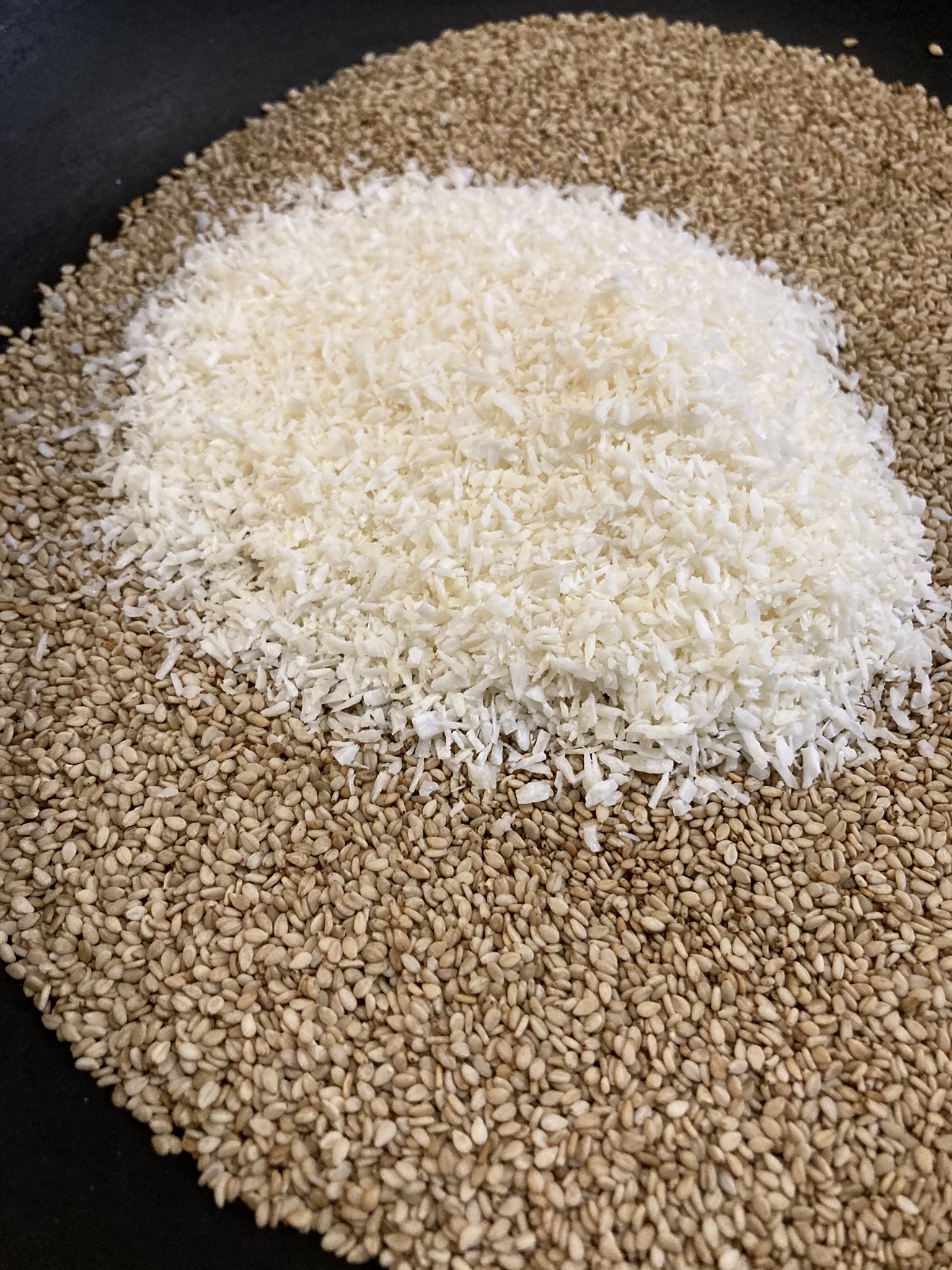
Sesame Seeds, White
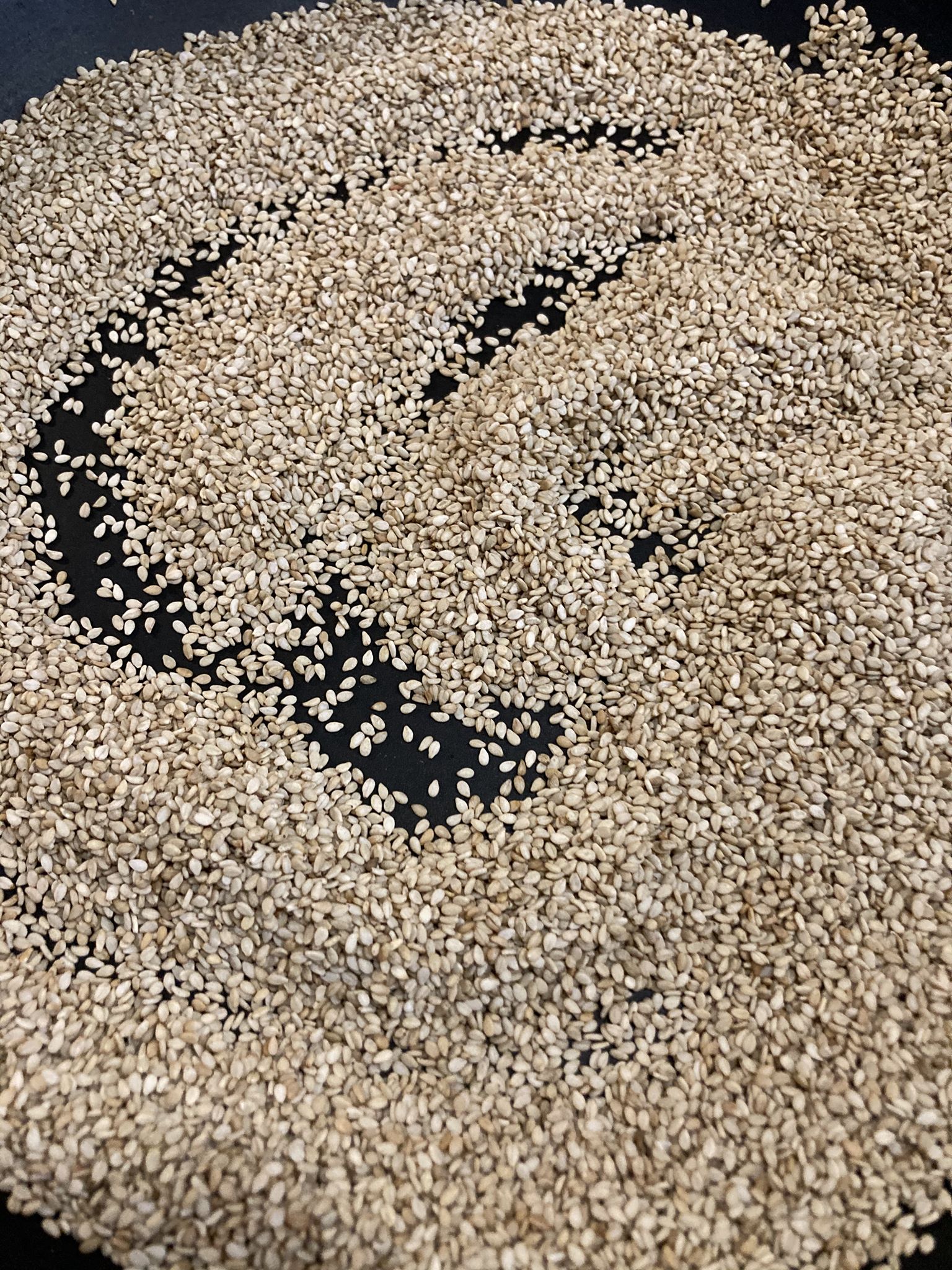
Redbud Syrup
This recipe uses roughly a 1:1 ratio to make a simple syrup out of redbud tea and sugar. The thin syrup is suitable for creating lovely spring drinks; the thicker syrup can be drizzled over pancakes or used to soak a pound cake. Redbud has a delicate floral flavor, so be careful not to overwhelm it with other ingredients.
a little lemon juice
1. Rinse blossoms. (Since you’ll be draining the blossoms, no need to go to a lot of effort to pick off stems.) In a medium pot on high heat, bring blossoms and water to a boil.
2. Remove from heat, cover, steep in fridge 6-8 hours or overnight. You’ve now made redbud tea.
3. Sieve flowers out and weigh redbud-steeped tea. Combine tea with equivalent weight of sugar in a pot on the stove.
4. Bring the mixture to a boil and then simmer 20-30 minutes for a light pink syrup (suitable for drinks), stirring occasionally. For a thicker syrup, such as you might use to soak a cake, simmer another 15-30 minutes, until the mixture is thick enough to coat the back of a spoon. (If you let it go too long, you’ll end up with rock candy.)
NOTE: If your liquid isn’t looking very pink, add a little lemon juice to change the PH and bring out the pinkness.
5. Let cool, and transfer to lidded jars for storage; store in the refrigerator for up to several weeks.
Pickled Redbuds
Do you like capers? Pickled redbuds are very similar, but with a faintly floral taste (a little like a sweetpea at first, then tangy), and a lovely color.
1/2 t. salt (ideally kosher or other non-iodized)
1. Gather redbud blossoms (in bud will work a little better for pickling than fully bloomed) — they come easily off the tree. Rinse blossoms and pick off stems; they’re easy to remove in clusters, so this won’t take long.
2. Combine vinegar, water, and salt; stir to combine.
3. Fill a clean jar with blossoms and cover with brine; add a little water if necessary to completely fill. Screw on top; all blossoms should be submerged in liquid.
4. Leave at room temperature for three days, away from direct heat and sunlight.
5. Transfer jar to refrigerator; it will keep for a few weeks. Enjoy pickled redbud wherever you would use capers.
Spicy Pineapple Pickle (Achar)
(10 minutes, makes about 4 cups)
In the dead of a Chicago winter, when the snow is piled high outside the door, and it feels like you’ll never be warm again, a sweet-spicy-tangy pineapple pickle will liven up your plate of rice and curry, and remind you that sunny lands do exist.
2 t. cayenne
1. Combine ingredients in a small pot, bring to a boil, simmer 5 minutes.
2. Let cool. Can be eaten right away, but better after it’s had a day or two to meld flavors.
NOTE: Store in the fridge and use within a few weeks; for longer pantry storage, follow safe canning procedures.
NOTE 2: If you want it a little less pungent/spicy, you can dilute by adding 1/2 – 1 c. water to the vinegar, and/or reduce the peppercorns / cayenne.
Picturesque
Roasted Brussels Sprouts with Jaggery, Balsamic, and Cayenne
(35 minutes, serves 2-4)
I love roasting brussels sprouts on a weeknight — five minutes of prep and the rest happens in the oven (or toaster oven, in my case), giving you plenty of time to cook a few more dishes.
These brussels sprouts are sweet, tangy, and a little spicy. A nice addition to the Thanksgiving table, or for dinner any night of the week.
1/2 t. cayenne
1. Preheat oven to 400°F.
2. Trim and halve brussels sprouts, cutting large sprouts smaller, aiming to have them roughly the same size so they’ll cook evenly.
3. In a bowl, mix together jaggery, garlic, balsamic, oil, salt, and cayenne. Add sprouts and stir to coat them well.
4. Line a baking sheet with foil or parchment paper; spread brussels sprouts in a single layer.
A Good Balance
Sri Lankan milk rice made with red rice takes a little longer, but the red rice is nice and healthy, which is a good balance for all that coconut milk. ![]()
Recipe here:
Eggplant Pickle / Brinjal Moju
(20 minutes prep + 30 min. cooking time, feeds 8 as an accompaniment)
Eggplant was the one thing I wouldn’t eat as a kid — I had a visceral reaction to the texture. But I adore it now, due to preparations like this, which really transform the texture — the eggplant here is a little chewy, a little soft, and supremely flavorful. If you leave the onions whole, they’ll retain a little crunch when you bite into them; it’s also fine to cut them and let them soften and crisp up more.
We call it a pickle, but brinjal moju is a quick-pickle — you can eat it right away, though it’s even tastier after the flavors (sweet, spicy, tangy) have had a chance to meld for a few hours. It’s terrific on a sandwich too! Try brinjal moju with coconut roti and big slices of grilled portobello mushroom (oil and salt and grill for a few minutes) for a hearty and delicious vegan lunch; it’d also pair beautifully with grilled chicken or roast beef.
(Thanks to Samanthi Hewakapuge for tips on how her family prepares this!)
NOTE: Pearl onions can be a little tricky to find in America; I often buy mine frozen at the Indian grocery store. They thaw well for use in preparations like this. But shallots also work; you want that type of delicate flavor.
1/3 c. vinegar
1. Place eggplant in a bowl, add turmeric, salt, and enough water to cover. Leave for at least 10 minutes; if you need to leave it to sit for longer, that’s fine.
2. Take the eggplant out by handfuls and squeeze the water out, transferring to another bowl or plate.
3. Heat oil in a deep pan and fry eggplant in batches (to golden-brown), removing to a plate lined with paper towels.
4. Use the same oil to fry the shallots or pearl onions, then fry the green chilies, removing to the paper towel-lined plate.
5. Pound ginger and garlic together in a mortar and pestle (or combine in food processor).
6. In a large bowl, combine ginger-garlic paste with remaining ingredients, stirring to dissolve the sugar. Taste and adjust flavors.
7. Stir in shallots and green chilies, then gently stir-in the eggplant. Set aside for a few hours to let the flavors blend, then serve with rice and curry, or with bread.
NOTE: Brinjal moju will keep in the fridge for a few weeks, or follow proper canning procedures to store for longer. Makes a little over a pint for canning — eggplant cooks down quite a lot.
Roasted Pumpkin Seeds, Sri Lankan-Style
The white seeds you get from a carving pumpkin are actually pumpkin seed husks — if you really wanted to, you could do a lot of work trying to get to the green seeds (known as pepitas) inside. Pepitas are delicious, but are actually usually harvested from pumpkins that don’t produce these white husks. But don’t throw these away — big white pumpkin ‘seeds’ are great roasted too, adding in some extra fiber and a nice crunch.
You could just toss them with a little oil and salt, but why not kick it up a notch? Try them Sri Lankan-style — these are a terrific topping for a curried pumpkin soup. Salty + sweet + savory + spicy. Perfect.
1 t. Sri Lankan roasted curry powder (with or without 1/2 t. cayenne, your choice)
1. Preheat oven to 300 F.
2. Toss seeds with oil and spices.
3. Spread in a flat layer on a sheet of foil and roast for about 40 minutes, until dry and crispy. (Keep an eye on them for the last 5-10 minutes of roasting, to make sure they don’t burn.)
Enjoy as a snack on their own, or topping your favorite autumn dishes.
